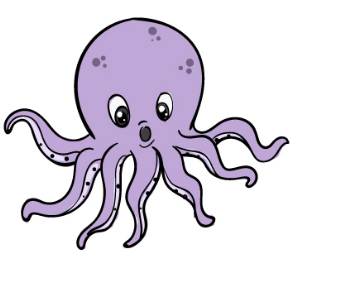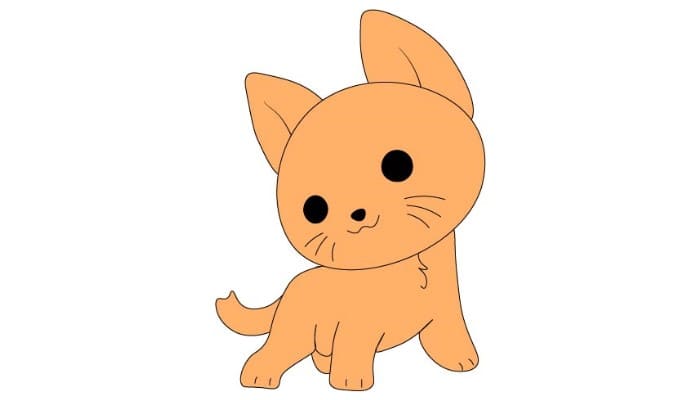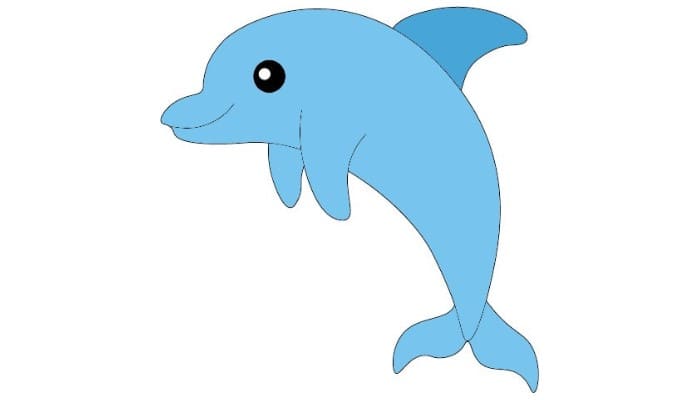Manatee Drawing for Kids
Drawing creatures can be a tomfoolery and instructive movement for youngsters, and what preferable subject to begin with once again the delicate and delightful manatee? Manatees, frequently alluded to as ocean cows, are huge, serene marine vertebrates that possess warm seaside waters. Their extraordinary, adjusted bodies and well disposed articulations make them ideal subjects for a tomfoolery and connecting with drawing project. This extensive aide will walk you through the most common way of drawing a manatee bit by bit, guaranteeing that children, everything being equal, can make a beguiling and superb craftsmanship. We should make a plunge!
Step 1: Gathering Materials
Prior to beginning the drawing, assembling every one of the vital materials is significant. Having the right instruments will make the interaction smoother and more charming.
1. Drawing Paper: Utilize great quality drawing paper that can deal with both pencil and shading materials.
2. Pencils: A scope of pencils from HB (for drawing) to 2B or 4B (for concealing) will be helpful.
3. Eraser: A decent quality eraser for rectifying errors and easing up lines.
4. Sharpener: Save your pencils sharp for exact lines.
5. Fine-tip Pen or Marker: For framing the last drawing.
6. Hued Pencils, Pastels, or Markers: For adding variety to your drawing.
Step 2: Understanding the Manatee
Prior to beginning the drawing, pause for a minute to comprehend what makes a manatee unique. Here are a few critical highlights to note:
1. Body Shape: Manatees have huge, adjusted bodies that tighten somewhat towards the tail.
2. Head: The head is adjusted with a wide, unshaven nose.
3. Eyes: Manatees have little, round eyes situated on the sides of their head.
4. Flippers: They have two flippers on one or the other side of their body.
5. Tail: Manatees have a wide, paddle-molded tail.
Step 3: Sketching the Basic Shapes
Begin by outlining the essential shapes that will frame the groundwork of your manatee drawing. Involving a pencil for this step will take into consideration simple changes.
1. Body: Draw an enormous, extended oval for the body. This will be the fundamental state of your manatee.
2. Head: toward one side of the body oval, draw a more modest circle for the head. The head ought to be proportionate to the body.
3. Interfacing the Head and Body: Draw a short, bended line interfacing the head to the body, shaping the neck. This line ought to stream normally to give the manatee a more loosened up pose.
4. Tail: Draw a wide, fan-molded tail at the opposite finish of the body oval. The tail ought to be somewhat bended to give the manatee a more unique look.
5. Flippers: Draw two little, oval shapes on each side of the body for the flippers.
Step 4: Adding Details to the Head
The head is where you can add a ton of character and character to your manatee. Center around the eyes, mouth, and different elements to make a charming and expressive look.
1. Eyes: Draw two little, round circles on each side of the head circle for the eyes. Inside each eye, attract a more modest circle to make the understudy. Pass on a little white circle in the student to add a radiance, giving the eyes an exuberant look.
2. Nostrils: Draw two little, oval shapes on the highest point of the nose for the nostrils. These ought to be situated nearer to the front of the head.
3. Mouth: Draw a short, bended line underneath the nostrils for the mouth. The mouth ought to be marginally improved to give your manatee a well disposed and grinning articulation.
4. Hairs: Add a couple of short lines around the nose to address the manatee’s stubbles. These lines ought to be light and unobtrusive.
Step 5: Refining the Body and Flippers
Presently, refine the body and flippers of your manatee, giving it more shape and detail.
1. Body Shape: Smooth out the lines of the body oval to make a more adjusted and regular shape. The body ought to tighten somewhat towards the tail.
2. Flippers: Refine the states of the flippers, making them more particular and proportionate. The flippers ought to be somewhat bended and tighten to an adjusted point.
3. Tail: Refine the state of the tail, making it more fan-formed and somewhat bended. Add a couple of short lines inside the tail to address the surface.
Step 6: Adding Texture and Final Details
Adding surface and subtleties will rejuvenate your manatee drawing and make it really captivating and dynamic.
1. Skin Surface: Utilize light, bended lines to add surface to the manatee’s skin. These lines ought to be unpretentious and follow the normal forms of the body, giving the manatee a more practical appearance.
2. Eye Subtleties: Refine the eyes by obscuring the understudies and adding little, light strokes around the eyes to address the skin folds. Underscore the radiance in the eyes to make them look energetic and expressive.
3. Mouth Subtleties: Add a couple of little, bended lines along the mouth to address the surface and subtleties. These lines ought to be light and unobtrusive to match the general style of the drawing.
Step 7: Outlining and Inking
Whenever you are happy with your pencil sketch, now is the ideal time to layout and ink your drawing. This will give it a spotless and completed look.
1. Framing: Utilize a fine-tip pen or marker to frame the whole drawing cautiously. Follow the pencil lines intently and ensure the lines are smooth and even. Really focus on the subtleties and surfaces you included the past advances.
2. Inking: In the wake of illustrating, rehash the drawing with the pen or marker to obscure the lines and add more profundity. Utilize a marginally thicker pen or marker for the primary frameworks and a more slender one for the subtleties and surfaces.
Step 8: Coloring Your Manatee
Presently comes the tomfoolery part – adding variety to your manatee! Pick brilliant and bright varieties to rejuvenate your drawing.
1. Body Tone: Manatees are commonly shades of dark, however since this is an animation, go ahead and get imaginative! You can utilize shades of blue, green, or even a mix of varieties. Utilize a light shade for the fundamental body tone and mix in hazier shades for profundity.
2. Eyes: Variety the students dark and utilize splendid tones like blue or green for the irises. Leave the radiance white to enthusiastic keep the eyes.
3. Mouth and Flippers: Utilize a marginally more obscure shade for the mouth and flipper subtleties. This will assist them with contrasting the fundamental body tone.
4. Features and Shadows: Utilize white or an extremely light shade of your primary tone to include features the manatee’s body, especially on the highest point of the head, back, and flippers. Utilize more obscure shades to add shadows under the body, flippers, and tail to give your manatee a three-layered look.
Step 9: Adding a Background
A basic foundation can improve your manatee drawing and make it really captivating. The following are a couple of thoughts:
1. Sea Scene: Draw a straightforward sea scene with waves and air pockets around the manatee. Use shades of blue for the water and add white features for the waves and air pockets.
2. Coral Reef: Add beautiful coral and fish around the manatee to cause a submerged situation. Utilize different splendid varieties to make the coral and fish stick out.
3. Kelp: Draw some ocean growth influencing behind the scenes. Utilize various shades of green to give the ocean growth a characteristic look.
Step 10: Final Touches
Before you finish, pause for a minute to survey your drawing and add any last contacts to consummate your manatee.
1. Frames: On the off chance that any diagrams have blurred during shading, go over them with a fine-tip dark pen or marker to make them fresh and understood. This will assist with characterizing the shapes and highlights of your manatee.
2. Features and Shadows: Add last features and shadows to upgrade the three-layered impact. Utilize a white pencil or marker to include little features the manatee’s skin, particularly on the flippers and tail. Add shadows under the body and flippers to ground your manatee in its current circumstance.
3. Survey: Investigate your attracting to guarantee all that looks adjusted and proportionate. Make any vital acclimations to improve the general appearance of your animation manatee.
Step 11: Displaying Your Artwork
Whenever you’ve completed your manatee drawing, now is the right time to show your work of art! The following are a couple of thoughts:
1. Outlining: Spot your attracting an edge and balance it on the wall. This will safeguard your work of art and give it an expert look.
2. Release Board: Pin your attracting to a notice board where everybody can see it. This is an extraordinary way to feature your work and motivate others to begin drawing.
3. Craftsmanship Portfolio: Add your attracting to a workmanship portfolio to keep it protected and coordinated. This will likewise permit you to glance back at your advancement over the long run.
Conclusion
Drawing an animation manatee is a tomfoolery and compensating imaginative undertaking that can assist jokes with fostering their drawing abilities and release their inventiveness. By following these means, children can make a nitty gritty and similar drawing that catches the cordial and delicate nature of manatees. Keep in mind, the main piece of attracting is to partake simultaneously and allowed your imagination to sparkle. Try not to stress over making everything awesome; all things being equal.




